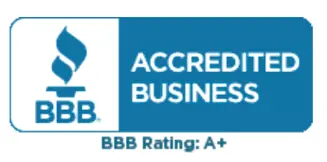-
GLYBURIDE (GLYE byoor ide) treats type 2 diabetes. It works by increasing insulin levels in your body, which decreases your blood sugar (glucose). It also helps your body use insulin more effectively. It belongs to a group of medications called sulfonylureas. Changes to diet and exercise are often combined with this medication.
This medicine may be used for other purposes; ask your health care provider or pharmacist if you have questions.
-
Take this medication by mouth with a glass of water. Follow the directions on the prescription label. If you take this medication once a day, take it with breakfast or the first main meal of the day. Take your medication at the same time each day. Do not take more often than directed.
Talk to your care team about the use of this medication in children. Special care may be needed.
Elderly patients over 65 years old may have a stronger reaction and need a smaller dose.
Overdosage: If you think you have taken too much of this medicine contact a poison control center or emergency room at once.
NOTE: This medicine is only for you. Do not share this medicine with others.
-
Do not take this medication with any of the following medications:
-Bosentan
This medication may also interact with the following medications:
-Cisapride
-Clarithromycin
-Colesevelam
-Metoclopramide
-Miconazole
-Probenecid
-Topiramate
-Warfarin
Many medications may cause an increase or decrease in blood sugar, these include:
-Alcohol-containing beverages
-Angiotensin converting enzyme inhibitors like enalapril, captopril, and lisinopril
-Aspirin and aspirin-like medications
-Beta-blockers like metoprolol and propranolol
-Calcium channel blockers like diltiazem and verapamil
-Chloramphenicol
-Chromium
-Female hormones, like estrogens or progestins and birth control pills
-Fluoxetine
-Heart medications like disopyramide
-Male hormones or anabolic steroids
-Medications called MAO Inhibitors like Nardil, Parnate, Marplan, Eldepryl
-Medications for allergies, asthma, cold, or cough
-Medications for mental problems
-Medications for weight loss
-Niacin
-NSAIDs, medications for pain and inflammation, like ibuprofen or naproxen
-Pentamidine
-Phenytoin
-Probenecid
-Quinolone antibiotics like ciprofloxacin, levofloxacin, ofloxacin
-Some herbal dietary supplements
-Steroid medications like prednisone or cortisone
-Thyroid medication
This list may not describe all possible interactions. Give your health care provider a list of all the medicines, herbs, non-prescription drugs, or dietary supplements you use. Also tell them if you smoke, drink alcohol, or use illegal drugs. Some items may interact with your medicine.
-
Visit your care team for regular checks on your progress.
A test called the HbA1C (A1C) will be monitored. This is a simple blood test. It measures your blood sugar control over the last 2 to 3 months. You will receive this test every 3 to 6 months.
Learn how to check your blood sugar. Learn the symptoms of low and high blood sugar and how to manage them.
Always carry a quick-source of sugar with you in case you have symptoms of low blood sugar. Examples include hard sugar candy or glucose tablets. Make sure others know that you can choke if you eat or drink when you develop serious symptoms of low blood sugar, such as seizures or unconsciousness. They must get medical help at once.
Tell your care team if you have high blood sugar. You might need to change the dose of your medication. If you are sick or exercising more than usual, you might need to change the dose of your medication.
Do not skip meals. Ask your care team if you should avoid alcohol. Many nonprescription cough and cold products contain sugar or alcohol. These can affect blood sugar.
This medication can make you more sensitive to the sun. Keep out of the sun. If you cannot avoid being in the sun, wear protective clothing and use sunscreen. Do not use sun lamps or tanning beds/booths.
Wear a medical ID bracelet or chain, and carry a card that describes your disease and details of your medication and dosage times.
This medication may cause a decrease in Co-Enyzme Q-10. You should make sure that you get enough Co-Enzyme Q-10 while you are taking this medication. Discuss the foods you eat and the vitamins you take with your care team.
-
If you miss a dose, take it as soon as you can. If it is almost time for your next dose, take only that dose. Do not take double or extra doses.
-
Side effects that you should report to your care team as soon as possible:
-Allergic reactions—skin rash, itching, hives, swelling of the face, lips, tongue, or throat
-Low blood sugar (hypoglycemia)—tremors or shaking, anxiety, sweating, cold or clammy skin, confusion, dizziness, rapid heartbeat
-Hemolytic anemia—unusual weakness or fatigue, dizziness, headache, trouble breathing, dark urine, yellowing skin or eyes
Side effects that usually do not require medical attention (report to your care team if they continue or are bothersome):
-Heartburn
-Nausea
This list may not describe all possible side effects. Call your doctor for medical advice about side effects. You may report side effects to FDA at 1-800-FDA-1088.
-
Keep out of the reach of children and pets.
Store at room temperature between 15 and 30 degrees C (59 and 86 degrees F). Throw away any unused medication after the expiration date.
NOTE: This sheet is a summary. It may not cover all possible information. If you have questions about this medicine, talk to your doctor, pharmacist, or health care provider.
DISCLAIMER: This drug information content is provided for informational purposes only and is not intended to be a substitute for professional medical advice, diagnosis, or treatment. Patients should always consult their physician with any questions regarding a medical condition and to obtain medical advice and treatment. Drug information is sourced from GSDD (Gold Standard Drug Database ) provided by Elsevier.

